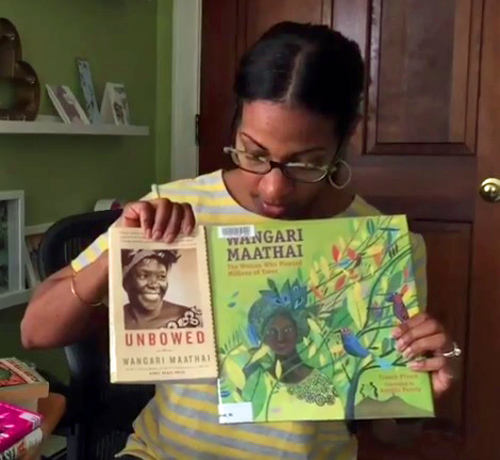
Hello everyone! My first book review of 2018 is also for the Literary Voyage Around the World Reading challenge. I am trying a different format. Let me know if you like it.
“The wall is the thing which separates them, but it is also their means of communications.” – Simone Weil, Gravity and Grace
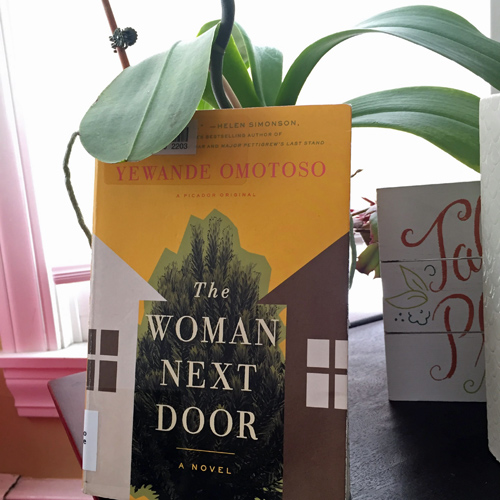
Title: The Woman Next Door
Author: Yewande Omotoso
Copyright: February 7, 2017
Genre: fiction
Format: book
Pages: 278
This quote above is at the very beginning of the book and it really captures the essence of the main characters Hortensia and Marion’s relationship. So I found it fitting to include in this review.
I first heard about this book on a Podcast and thought it would be a wonderful book to read and include in my reading challenge selections. This is a newly published book but lucky for me, my library had a copy available so you know I had to snatch it up.
Summary (from Goodreads):
Hortensia James and Marion Agostino are neighbors. One is black, one white. Both are successful women with impressive careers. Both have recently been widowed. And both are sworn enemies, sharing hedge and hostility which they prune with a zeal that belies the fact that they are both over eighty.
But one day an unforeseen event forces the women together.
My Thoughts:
I immediately was pulled into the story of these two women, one black, Hortensia and one white, Marion and their difficult relationship. Both had successful careers and they met when Hortensia attended one of the community committee meetings which had been started by Marion. Although Marion took the meetings very seriously, Hortensia saw them as very exclusionary and attended by right and often to “put the ladies in their place”.
The book demonstrated some of the residuals of apartheid through the relationship of the two woman. Much of their initial hate for one another came from preconceived ideas they had about each other. Because they initially never took the time to get to know each other, their past histories dominated the way they related to each other rather than truth. For Marion, she feigned innocence to the history and racial bias but Hortensia quickly and frequently reminded her which led to a very cynical relationship.
As the story progresses, I was able to learn more about each woman’s background from childhood to adulthood and it laid the foundation for their present beliefs and personalities. I love when stories do this because it reminds us that there is depth to consider before judgment. I could have easily hated both characters but the back stories provided the bridge to understanding.
This book is about love, loss, race, relationships, friendship, and history. But the author, Omotoso does include some very important issues into the story which I like because it gave me an opportunity to learn more about the South African history. It has peaked my interest regarding the topic of land reform and the Land Claims Commision.
The Land Reform Processes focused on three areas: restitution, land tenure reform and land redistribution. Restitution, where the government compensates (monetary) individuals who had been forcefully removed, has been very unsuccessful and the policy has now shifted to redistribution with secure land tenure. Land tenure reform is a system of recognizing people’s right to own land and therefore control of the land. – wikipedia
Omotoso incorporates the Land Reform Process into the story when a family makes a claim regarding the development in which the ladies live. So the community commission led by Marion decide to investigate. In addition to that claim, there is also a descendant of a former slave who lived in slave quarters on the land where Hortensia’s property lies. Under apartheid, the land was taken from them. They wanted to bury their grandmother’s ashes under a Silver Tree which they identified with specific markings that occupy a place on Hortensia’s property.
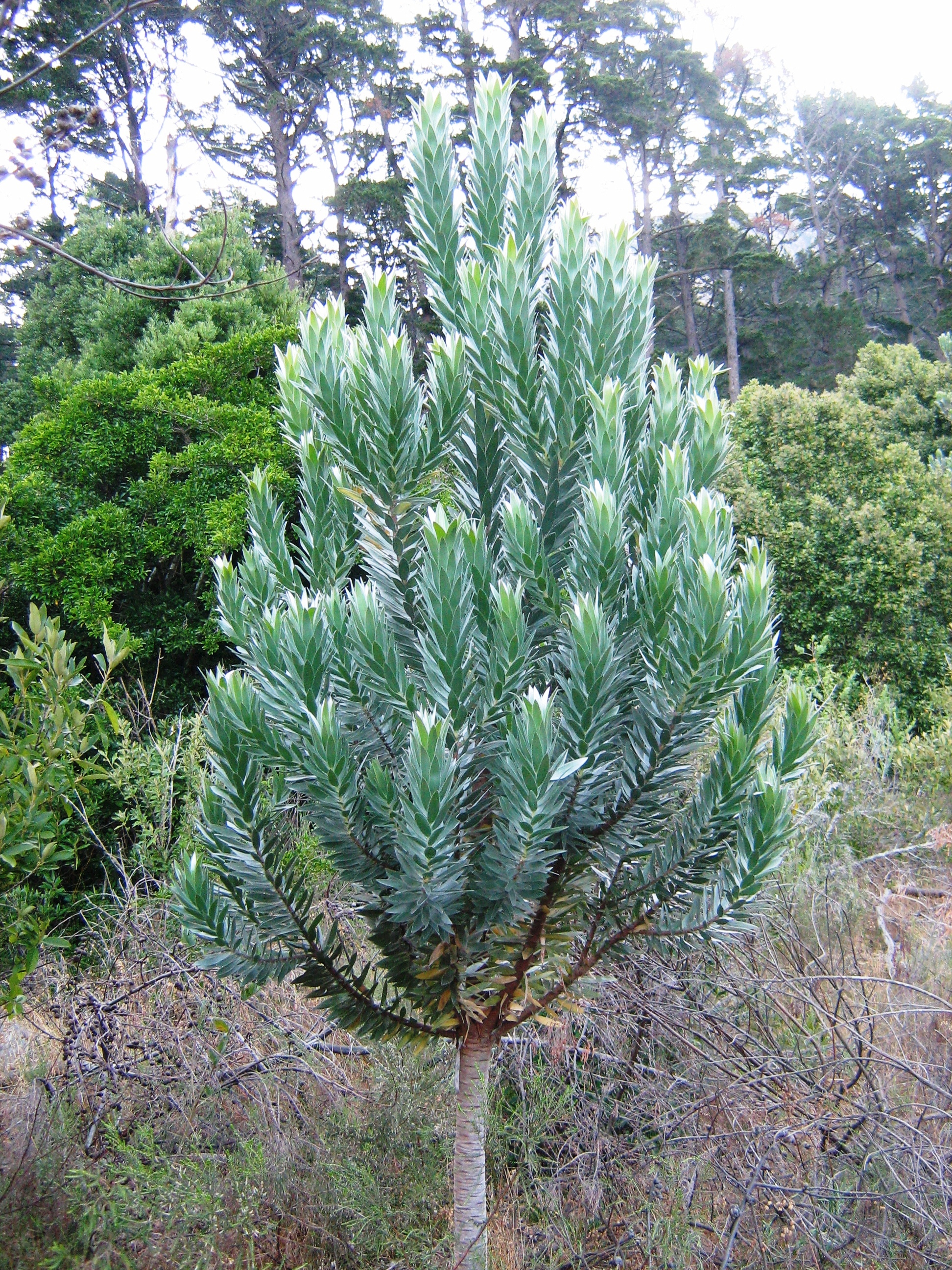
Silver Tree in South Africa
Marion begins to question her previously held beliefs when she takes the time to go to the library and read up on the topic. I think it provided a pivotal moment for a shift if ever so slightly of her character.
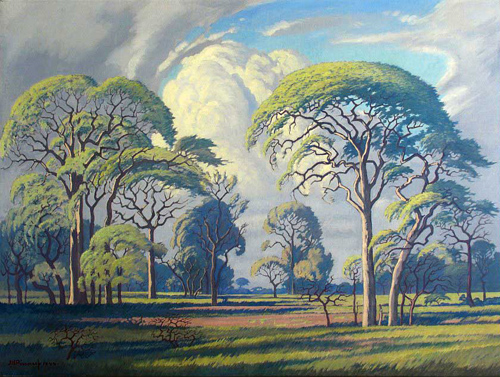
Jacobus Hendrik Pierneef (1856-1957) was regarded as one of the best of the Old South Africa masters. – wiki
Both hide secrets from each other and one that Marion can’t think of revealing to Hortensia is that her husband squandered their money before his death and left her in debt. So much so she will have to sell her house. However, she has a very valuable art piece by Pierneef that she could sell to help her situation. I googled and found a lovely image of one of his works for you to see (above). This is the beauty of reading books, they allow me to grow and learn about so many things. I find it fun to go online and find things to help bring the story to life.
A bit about the author…
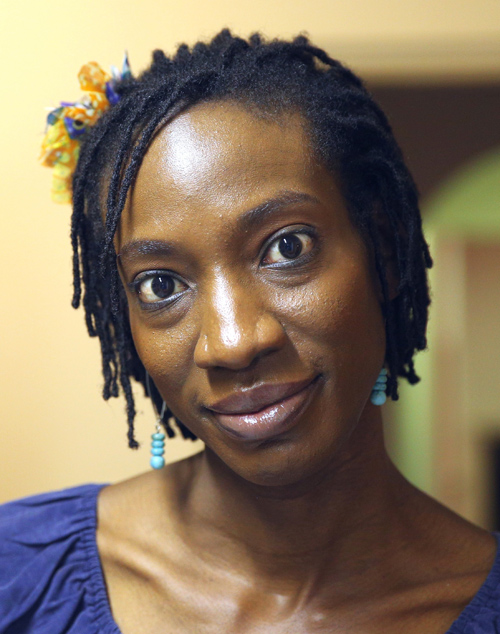
photo from the web
Yewande Omotoso was born in Barbados in 1980 to a Barbadian mother and Nigerian father. They moved within a year of her birth to Nigeria and in 1992 they then moved to South Africa. Her debut novel is called Bom Boy and was published in 2011 and won the 2012 South African Literary Awards (SALA).

South African flag
I really enjoyed this book. This book also qualifies for my Literary Voyage Around the World Reading challenge. Since the setting is in South Africa I will use it for that country. I give it three butterflies!
Belinda


